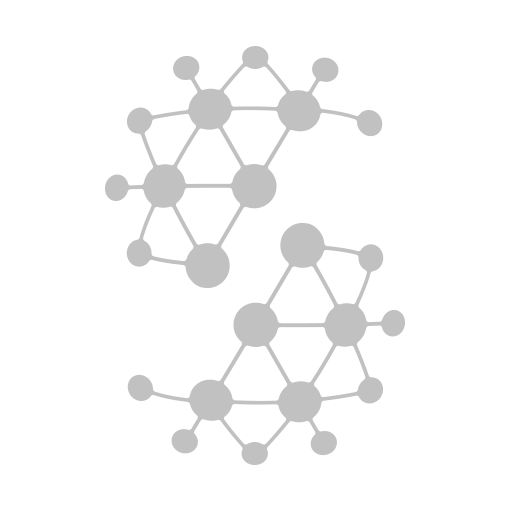Links & Literature
Here you will find a list of links to important Swiss and international specialist societies and networks, journals and selected articles.
Professional societies and networks
The following societies and networks promote the scientific research and clinical application of interventional methods in psychiatry:
Schweizerische Gesellschaft für Biologische Psychiatrie (SSBP)
L’Association Française de Psychiatrie Biologique et de Neuropsychopharmacologie (AFPBN)
Australian Brain Stimulation Society (abss)
______
Scientific journals and articles
In addition to the links to journals that publish exclusively on topics of neurostimulation or interventional psychiatry, we have compiled examples of important articles on the topic:
Guidelines
Repetitive transcranial magnetic stimulation for depression, NICE interventional procedure guidance [IPG542]. National Institute for Health and Care Excellence, published December 2015.
Milev, RV et al. Canadian Network for Mood and Anxiety Treatments (CANMAT) 2016 Clinical Guidelines for the Management of Adults with Major Depressive Disorder: Section 4. Neurostimulation Treatments. Can J Psychiatry 2016 Sep;61(9):561-75.
Non invasive brain stimulation (NIBS)
Riddling, MC et al. Is there a future for therapeutic use of transcranial magnetic stimulation? Nat Rev Neurosci 2007 Jul;8(7):559-67.
Dayan, E et al. Noninvasive brain stimulation: from physiology to network dynamics and back. Nat Neurosci 2013 Jul;16(7):838-44.
He, W et al. Protocols of non-invasive brain stimulation for neuroplasticity induction. Neurosci Lett 2018 Feb 21. pii: S0304-3940(18)30127-7.
Electro-convulsive therapy (ECT)
Pagnin, D et al. Efficacy of ECT in Depression: A Meta-Analytic Review. J ECT 2004 Mar; 20: 13-20.
Schoeyen, HK et al. Treatment-Resistant Bipolar Depression: A Randomized Controllled Trial of Electroconvulsive Therapy Versus Algorithm-Based Pharmacological Treatment. Am J Psychiatry 2015 Jan;172(1):41-51.
Zilles, D et al. Elektrokonvulsionstherapie zur Behandlung unipolar depressiver Störungen. Nervenarzt 2015; 86:549-556
Ross, EL et al. Cost-effectiveness of Electroconvulsive Therapy vs Pharmacotherapy/Psychotherapy for Treatment-Resistant Depression in the United States. JAMA Psychiatry 2018 Jul 1;75(7):713-722.
Belz, M et al. Wirksamkeit und Verträglichkeit der Elektrokonvulsionstherapie. Nervenarzt 2018; 89:1271-1276.
Osler, M et al. Electroconvulsive therapy and risk of dementia in patients with affective disorders: a cohort study. Lancet Psychiatry 2018; 5:348-356.
Transcranial magnetic stimulation (rTMS)
Barker, AT et al. Magnetic stimulation of the human brain and peripheral nervous system: an introduction and the results of an initial clinical evaluation. Neurosurgery 1987 Jan; 20 (1): 100-9.
Pascual-Leone, A et al. Lateralized effect of rapid-rate transcranial magnetic stimulation of the prefrontal cortex on mood. Neurology 1996 Feb; 46 (2): 499-502.
Hoffmann, ER et al. Transcranial magnetic stimulation of left temporoparietal cortex and medication-resistant auditory hallucinations. Arch Gen Psychiatry 2003 Jan;60(1):49-56.
Ridding, MC et al. Is there a future for therapeutic use of transcranial magnetic stimulation? Nat Rev Neurosci 2007 Jul;8(7):559-67.
O’Reardon, JP et al. Efficacy and safety of transcranial magnetic stimulation in the acute treatment of major depression: a multisite randomized controlled trial. Biol Psychiatry 2007 Dec 1;62(11):1208-16.
Rossi, S et al. Safety, ethical considerations, and application guidelines for the use of transcranial magnetic stimulation in clinical practice and research. Clin Neurophysiol 2009 Dec;120(12):2008-2039.
Slotema, CW et al. Review of the Efficacy of Transcranial Magnetic Stimulation for Auditory Verbal Hallucinations. Biol. Psychiatry 2014 Jul 15;76(2):101-10.
Blumberger, DM et al. Effectiveness of theta burst versus high-frequency repetitive transcranial magnetic stimulation in patients with depression (THREE-D): a randomised non-inferiority trial. Lancet 2018 Apr 28;391(10131):1683-1692.
Baeken, C. Accelerated rTMS: A Potential Treatment to Alleviate Refractory Depression. Front. Psychol 2018 Oct 31;9:2017.
Lefaucheur, JP et al. Evidence-based guidelines on the therapeutic use of repetitive transcranial magnetic stimulation (rTMS): An update (2014–2018). Clin Neurophysiol 2020 Feb; 131(2): 474-528.
Transcranial DC stimulation (tDCS)
Brunoni, AR et al. A systematic review on reporting and assessment of adverse effects associated with transcranial direct current stimulation. Int J Neuropsychopharmacol 2011 Sep;14(8):1133-45.
Tortella, G et al. Transcranial direct current stimulation in psychiatric disorders. World J Psychiatry 2015 Mar 22; 5(1): 88–102.
Bikson, M et al. Safety of Transcranial Direct Current Stimulation: Evidence Based Update 2016. Brain Stimul 2016 Sep-Oct;9(5):641-661.
Brunoni, AR et al. Transcranial direct current stimulation for acute major depressive episodes: meta-analysis of individual patient data. Br J Psychiatry 2016 Jun;208(6):522-31.
Lefaucheur, JP et al. Evidence-based guidelines on the therapeutic use of transcranial direct current stimulation (tDCS). Clin Neurophysiol 2017 Jan;128(1):56-92.
Ketamine
World J Biol Psychiatry, 2020 Nov 3;1-45. Practical recommendations for the management of treatment-resistant depression with esketamine nasal spray therapy: Basic science, evidence-based knowledge and expert guidance. Kasper S. et al.
Bahji A et al. Comparative efficacy of racemic ketamine and esketamine for depression: A systematic review and meta-analysis. Journal of Affective Disorders, 278, 542-555.
